Two years ago, if you had told me that Monitor would soon publish its very first Women’s Issue, I probably would’ve laughed. It’s not that women were absent from the equipment finance industry; it was just rare to see us in the spotlight. But here we are. A lot can change in two short years.
Evolution in Action
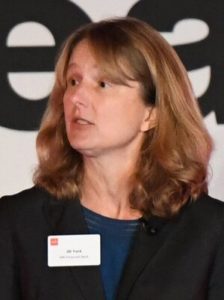
“We’re a maturing industry,” says Valerie Jester of Brandywine Capital Associates, who served as the first female chair of the board of the Equipment Leasing and Finance Association. “It’s evolved into this next phase, which is about the credentials of the players and the creativity of the companies and their senior management. The industry is now very reflective of the fact that we have so many phenomenal women involved.”
Like Jester, Fifth Third’s Jill York began her career in the 1980s. “More women are choosing this career for themselves,” she says. “It’s a very good career, and I think more women are choosing it today than 20 years ago.”
“Women are getting a stronger voice in the equipment finance industry,” says Lori Frasier of CPI Card Group. “We saw that at the ELFA convention this year with women speakers throughout breakouts as well as on the big stage. And the absolute, unmitigated success of the Women’s Council can’t be argued with. These things are making leaders think, ‘Wow, this is still an issue. What am I doing about it?’”
Current ELFA Women’s Council Chair, HP’s Deborah Baker, says we still have a long way to go. “I have a tendency to count the number of women in the room, and because I’ve always been in technology, as well as in financial services, it’s almost a double-edged sword. The percentages have improved over time, but I still think they’re nowhere near where we need to be in terms of having equity.”
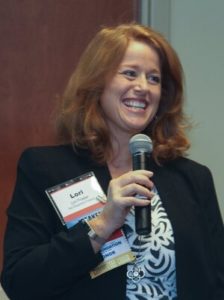
“That awareness is the first step,” says Frasier. “You must first admit you have a problem. The equipment finance industry has admitted in a very big way that we have a problem. But one thing about this industry, if you look back over its history, is whenever it’s had a problem, it has innovated, flexed and changed to turn that problem into an opportunity.”
Frasier should know. She is the former chair and driving force behind the ELFA Women’s Council, which launched a “wildly successful” Women’s Forum in 2018 that doubled in size this year. The council also hosts women’s receptions at other association events and is creating a mentoring program.
“My first ELFA conference was 2003 and frankly I was a little dismayed by the lack of women in leadership positions,” Frasier says. “It has come a long way in that time.”
Frasier believes women were not involved because many companies assumed that only C-level or senior sales leaders should attend association events. “When you limit an audience by role, you may not think that you are creating an institutional bias, but you are,” she says.
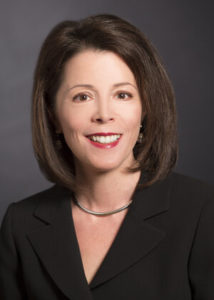
Baker, who attended her first ELFA convention three years ago is a perfect example. “While I was introducing myself to someone, I mentioned being in the industry for over 20 years, and they asked, ‘Why is this your first convention?’ My response was, ‘No one has ever encouraged me to go.’ That was a pivotal point where I decided that 1) I need to own this for myself and get more involved, and 2) I should be influencing other women in my organization to get involved.”
“In the last few years, certainly through the ELFA and its member companies, there’s a higher recognition to foster a more inclusive environment,” says Amy Nelson from DLL. “We see more people speaking up, highlighting things that don’t feel inclusive and pointing them out in such a way that the industry can react, the companies can react, and colleagues can react. I definitely see things moving more quickly now, and I’d say we’ve made some remarkable progress.”
Kara Miyasato of Stryker’s Flex Financial business is one woman who has been vocal about the inequity she sees. “When I first started attending ELFA events, I was shocked at how few women and even fewer women of color there were both as speakers and even attendees. I found that really disheartening. Through a concerted effort, there seems to be change … I really can’t wait until our industry meetings are full of women from different backgrounds and walks of life.”
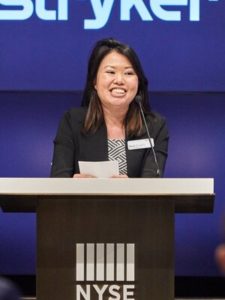
Frasier says #MeToo delivered a groundswell of recognition to an ongoing problem. “Before, many leaders thought, ‘Well, the woman thing is solved.’ #MeToo brought it back into the conversation and said, ‘No, this isn’t solved.’ Individuals, companies, industry associations and industries need to be much more conscious about these things.”
Many companies in the industry are doing just that while taking steps to actively recruit and retain top women in the industry.
“I’m proud of the work that Stryker’s doing to attract great female talent,” says Miyasato. “I sit on the global steering committee for the Stryker Women’s Network, and one of our initiatives is recruitment. We’ve got great representation at the entry level, and it’s encouraging to see how many talented young women come into the company straight out of college.”
“Fifth Third has business resource groups, one of which is for women,” says York. “I think that’s a good resource for women, to network, to certainly build informal relationships with other women across the company. I participated in an event in Cincinnati back in October, and it was terrific. It was hosted by one of our senior leaders in the bank, and it was nice. Both men and women leaders attended, as well as all women in that area were invited to attend. I think those activities are helpful to younger women in the bank.”
Breaking Down Barriers
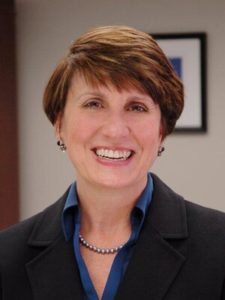
Despite the progress the industry has made over the years, initiatives like these are vital steps toward achieving true gender parity.
“If you look at banking overall, women make up a little more than half of the financial services employment population. But if you start getting into those numbers, what you find is the higher you go, in those P & L, sales leader or C-level roles, there are fewer women,” says Frasier. “As long as we still have this stronghold of older white men at the tops of our organizations, it’s vital to have ‘woke’ guys in those positions who are actively thinking about how to make sure that there are no boundaries women have to jump over that men don’t.”
“Empirical data shows that companies with diverse workforces, leadership and boards of directors financially outperform competitors who are not as diverse and inclusive,” says Baker. “The data proves it. Now it’s a matter of ensuring that it’s done in practice because it takes work in this industry that has been so male dominated in the past.”
“Women make tremendous leaders, and as an organization, if you’re not promoting and moving women up to senior roles, you’re leaving an awful lot on the table,” says Jester.
“What it means to be a leader is evolving,” says Miyasato. “We’ve learned that leaders can look different and can think different. Women bring a different set of experiences than men do. When I’ve struggled with tough questions about priorities and my work life and personal life intersecting, my female mentors gave me the advice that provided clarity and pushed me through. It’s important to have different voices and different thoughts within leadership positions.”
York agrees: “It’s good for younger women to have both male and female leaders they can go to when they have questions, issues, or concerns. I think it’s also important for them to see women that have leadership responsibility and that is something that they may want to aspire to.”
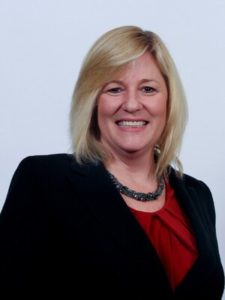
“A primary aspect for leadership is not only being able to motivate a team, but in doing so you have to really understand people and be incredibly empathetic to their lives and what they’re going through,” says Jester. “You must know how to get inside that thought process and be able to effectively motivate and mentor them. I think that women are very good at that — it’s what we do in our lives anyway.”
Jester points out that many women in the workforce are “pulled in five different directions” and “managing all these pieces,” with schedules that are more hectic than ever before, so flexibility is essential. “You’ve got to be able to understand that, be empathetic toward it and figure out a way to make these folks a part of your team and a part of the process.”
“In many cases, women are perfectly happy being in that supporting role and winning as a team,” says Baker. “Some of the best project teams I’ve ever been a part of have been, coincidentally, all female. Women often have the willingness to challenge perspectives but do so respectfully. And once a decision is made, to be 100% all in and supportive.”
Closing the Gap
But even though women make fantastic leaders and teammates, a “confidence gap” exists. According to a recent Boston Globe article, while women are confident in their abilities to take on higher-level roles, men are often over confident.
“Women hold ourselves to a standard that our male counterparts do not, and that’s definitely an awareness that every woman needs,” Frasier says.
“Many people feel like they have imposter syndrome,” says Miyasato. “They look at an advanced job description and feel like they’re not ready. It’s about looking at the body of work that you produced and realizing that you bring value. If you don’t feel that way talk to your manager, mentors and advocates to learn what they think you do well.”
“People managers should be encouraging direct reports that show merit and high potential to vie for increasing responsibility, to take the risk and have confidence in their own abilities, whether or not they can 100% check every box on the requirements,” says Baker. “To feel confident and comfortable applying for a job, a woman often wants to have 90% of the prerequisites while if man has about 50% of them, he’s going to go for it. I have seen this historically with some of my direct reports, and the gender difference is significant.”
“Studies have shown that women and people of color have an outsized benefit from sponsors,” Miyasato says. “As leaders, we think about what we’re doing to nurture the next generation. I think that advocating for and sponsoring young women is critical, especially women of color, to help them to feel confident and know that they’re not alone because someone is advocating for them.”
“When I talk to women I’m mentoring, I encourage them to take more direct control over their careers and to focus on actively building their networks — not waiting for opportunities to present themselves,” says Nelson. “I encourage them to identify their dream roles, to interview for them, to be comfortable if they don’t get them and to use the experience as an opportunity to make new connections both professionally and personally.”
“The most important thing that anybody can do, whether it’s a company, an association or an individual in any position is encourage the entrepreneurial spirit that we all have within us,” says Jester. “Even if you work for a big company. Put yourself out there. What have you got to lose?”
Frasier says she’s read depressing statistics that predict it will take 70 years for women to achieve gender equity at top levels, but she doesn’t believe it will take that long. She predicts equity will accelerate as baby boomers retire, leaving Generation X and millennials in the lead. “The nature and the outlook of these younger people coming into the workforce are going to change things faster than we’ve seen them changing,” she says. “So far, it’s been a little more evolutionary, but I believe we’re going to see something a little more revolutionary over the next 20 to 25 years.”
“As the chair of the ELFA Emerging Talent Advisory Council, I’m continuously meeting young women who’ve just started their careers in this industry, and they’re smart and engaged,” says Miyasato. “What’s exciting is they won’t have to face some of the challenges the women who have come before them have. They won’t have to be the only one in the room or the first woman to do something, and that makes me happy. I’m excited to see what they do with that freedom.” •